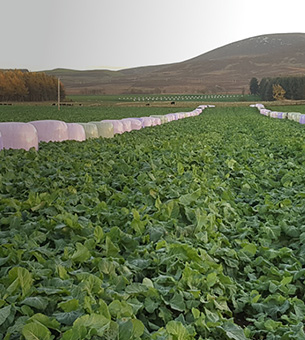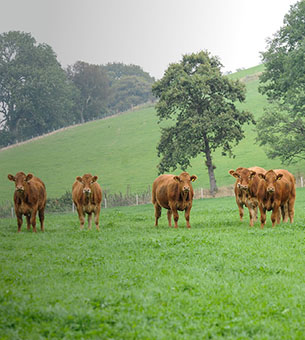Brian and Pat Hogan farm 99 hectares (244 acres) at Horse and Jockey in County Tipperary, running a conventional grass-based 140-cow spring calving herd.
They are committed to choosing top-performing grass varieties to achieve the most they can from their 39.5-hectare (98-acre) grazing platform.
We caught up with Brian, host of our reseeding demo two years ago, and learnt how and why reseeding remains a fundamental part of his grassland management:
Direct drilling
We used two methods of sowing in the 2019 reseed of Top 5 Extend. Part of the field was direct drilled with an agriseeder, with the other disced and sown using a power harrow and seeder as a one pass.
Both have established equally well in what were perfect autumn conditions for reseeding. The direct drilled area stayed in lines until it tillered out fully but at this point, there is no difference between the two methods.
Increased clover content
We have also increased the clover content of the milking platform over the last three years, by oversowing about 10% into grazing swards and the cows milk very well on these. We’ve used both a fertiliser spreader and agriseeder to stitch in the clover.
Both have worked successfully although this year the clover is struggling a bit due to the dry weather. The seedlings grew well at the beginning but were under pressure later, so the weather over the next few weeks will determine the longer-term outcome.
Spring reseeding on wetter ground
Generally, we only reseed in spring on wetter ground where there’s a risk of not being able to graze in autumn. We didn’t do any reseeding in spring this year as we wanted to gain as much first-cut silage as possible.
Instead, we reseeded 17 acres at the beginning of August, having sprayed off in mid-July after a light second cut of silage following a dry period. By mid-July, I know if I have enough winter feed and whether I can afford to spray off ground for reseeding. It’s also a better time of year for moisture, between winter and spring harvests.
This year’s reseeding area was ploughed, levelled and sown with one pass before being rolled. It has turned out very well. We included 1 kg clover in the mixtures and are trying Gracehill on the farm for the first time. With plenty of rain and heat, the seeds germinated in eight days, and we hope to have three grazings from it before winter.
By 10 August we had 9.3 tonnes of grass growth across the farm, with up to eight grazings in the best fields of the grazing platform. We have followed the cows all summer with 17 units of protected urea and four sulphur.
Fertiliser strategy
We plan to blanket spread all paddocks with 40 units/acre protected urea in the first week of September. This is the last fertiliser for most paddocks except for some receiving 30 units of potassium (K) where required.,
The overall value of these autumn reseeds for me is the earlier spring growth, response to N and better cleanouts, particularly with the high-quality grasses in the latest Germinal varieties.



